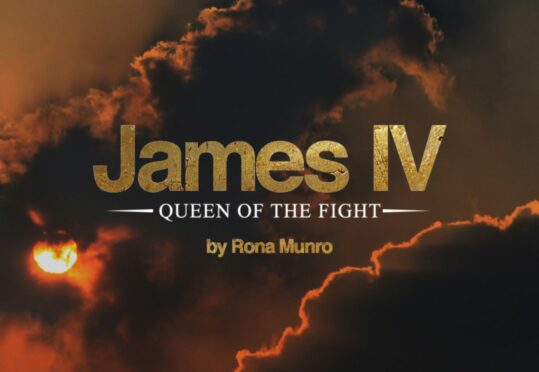
One of Scotland’s most popular and influential kings, part of James IV’s life is explored in a new production by award-winning playwright and author of the highly successful James Plays, Rona Munro.
Here, she tells Megan McEachern the Honest Truth about the ‘renaissance king’s’ influence in Europe, his creation of the Scottish navy and how Moorish people were a key part of his court.
How long did James IV rule for and when?
James IV came to the throne in 1488 at the age of 15. He was king until his death at the Battle of Flodden in 1513.
What is James IV famous for?
He’s often described as Scotland’s ‘renaissance king’, he ruled through decades of comparative peace and was clearly a popular monarch whose rule did a lot to unite the various warring factions at the heart of power in Scotland.
During his reign Scotland’s status as a power in Europe grew significantly and he’s seen as a great promoter of arts and culture, as well as a highly educated man and a great fighter.
He’s probably equally, if not more famous for, the manner of his death. He was the last British monarch to die in battle. He was killed fighting the English at Flodden.
What did losing battle of Flodden mean for Scotland at the time?
When James IV was killed at Flodden it is often seen as the beginning of the end of Scotland’s status as an equal nation to England in terms of wealth and power.
It’s interesting to wonder what might have happened if the battle had gone the other way.
Your new play James IV focuses on the stories of two Moorish women brought to the Scottish court, can you tell us a little bit of this lesser known story and how this happened?
They probably came from what is now Spain and Portugal and were part of the very large community of people of African origin who had been living in Europe for hundreds of years at this point. So generations back they would have been from Africa but at this point they are Europeans.
There were definitely many more than two and we can find glimpses of what the others were up to scattered through the sparse historical record. Several of them are recorded as participating in royal tournaments. Others marry into the nobility.
It hasn’t been a topic of much interest till now and some of the assumptions about this history reflect the unconscious cultural racism of our times, the idea that non-white people in medieval Scotland could be wealthy, powerful or influential has not seemed credible to later historians but the evidence of Treasury Rolls and other records bears this out.
Can you tell us about James IV’s role in founding the Scottish Navy and what that meant at the time?
I know it was one of his greatest ambitions to develop a fleet of Scottish ships for trade and exploration.
He believed, correctly, that whoever had the strongest fleet would shortly rise to a position of global importance. His ship, ‘The Great Michael’ was the largest ship ever built in Europe.
However, after his death and the annihilation of a large part of Scotland’s population in the battle of Flooden all those ambitions came to nothing.
James IV Queen of the Fight, touring Scotland September 30 – November 12 2022, tickets on sale now via nationaltheatrescotland.com

Enjoy the convenience of having The Sunday Post delivered as a digital ePaper straight to your smartphone, tablet or computer.
Subscribe for only £5.49 a month and enjoy all the benefits of the printed paper as a digital replica.
Subscribe